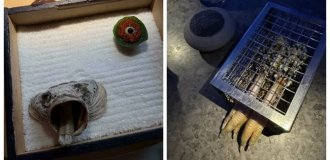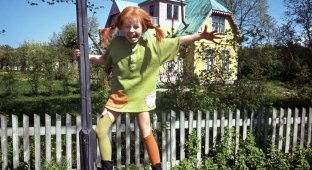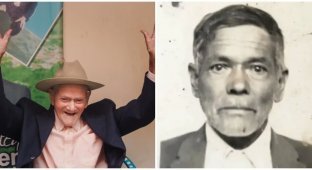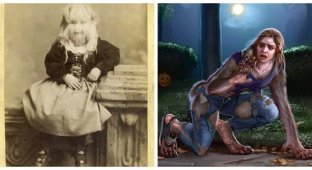Astrid Lindgren: "Happiness comes from within, not from others" (15 photos)
Lindgren lived a long life and died at the age of 94. She was married and had two children - everything is quite ordinary, like everyone else. But she had her own secrets, which were revealed only recently. 
In 1907, in the south of Sweden (the city of Vimmerby), a girl was born to the peasant family of Erikssons, who was named Astrid. It is noteworthy that her parents met when Samuel August was 13 years old, and Hannah was only seven. When Hannah turned 18, they got married.
Youth 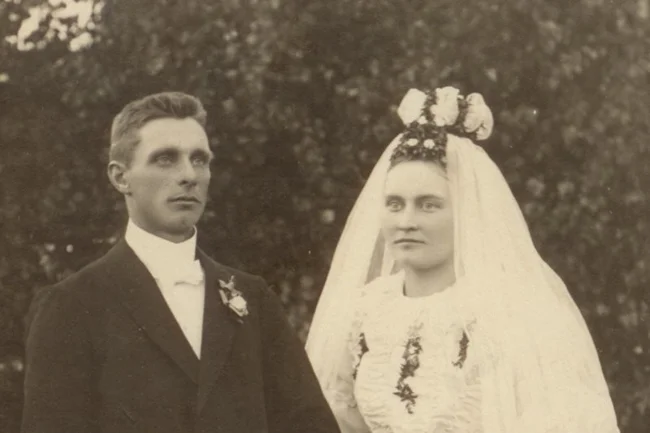
Hannah and Samuel August
Astrid was the second of four children in the family. The Erikssons differed from their conservative Swedish neighbors in that they were openly affectionate with all members of the family. The entire family lived on a farm near the city, and they enjoyed being at one with nature. Astrid said that her childhood was fun and extreme:
"We climbed the highest trees and jumped between the rows of boards at the sawmill. We climbed high on the roof and balanced on it, and if one of us stumbled, our games could stop forever."
By the way, Lindgren retained her desire to climb trees until quite old age. She always said, "The Law of Moses, thank God, does not forbid old women from climbing trees." 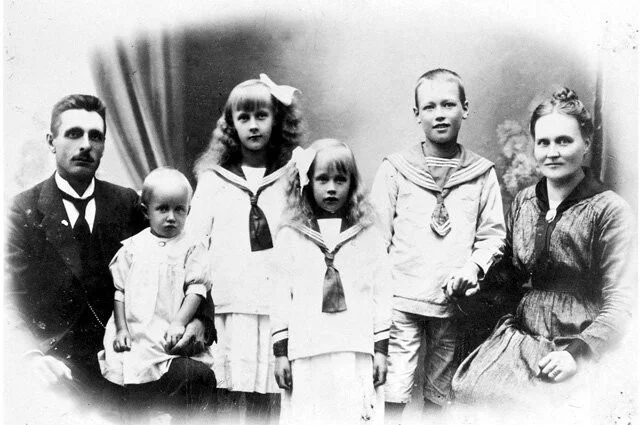
The entire Ericsson family. Astrid is third from the left
Astrid's grandson recalled that once, on his sixth birthday, he invited his friends over, and his grandmother dressed up as a witch and started chasing the kids around the apartment with a broom. All the children were happy and squealed with delight.
Lindgren was easy-going, optimistic, but also very smart and insightful. She studied from childhood, and began reading from a very early age. But due to her character, the girl often had problems with discipline, and the Pippi Longstocking she created was very similar to her creator.
And Astrid began to show her writing abilities in elementary school, and her childhood work was even published in the local newspaper. And only after that Lindgren persuaded her parents to agree to her doing an internship at Vimmerby tidning, the main newspaper of her city. But at that time, the world of journalism was a man's world. And the only job she could do was as a secretary.
Work 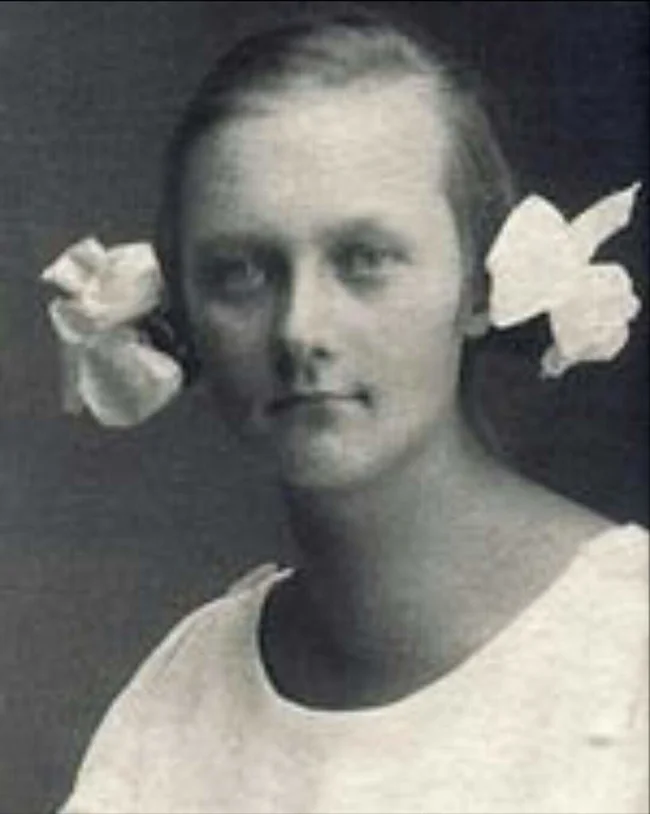
However, the editor-in-chief of the newspaper had previously been familiar with Astrid's work, published in the newspaper, and gave the young intern a chance. Obituaries, notes, reports and proofreading - these were the duties of the young worker. Not bad for a newbie.
At the age of 17, Lindgren cut her hair short, which shocked all the locals (the town had just over 3,000 residents). Only a few admired such a bold move, while the rest criticized the young rebel. Moreover, Astrid wore a bow tie and men's suits. And this was at a time when a girl had only one destiny - to marry well, sit at home and raise children there, while simultaneously courting her husband.
Samuel August tried to discipline his daughter, but all his attempts failed. 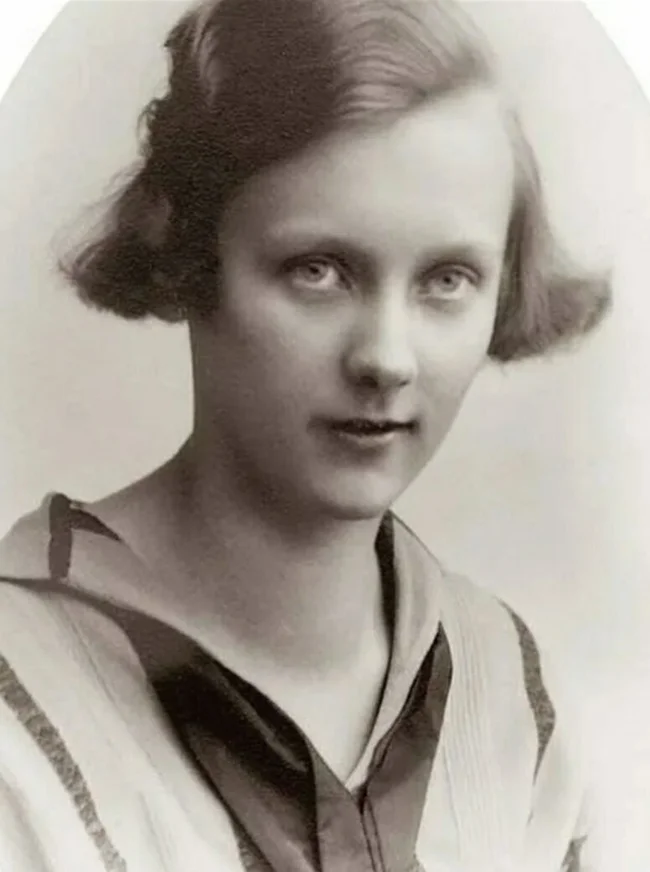
Astrid in her youth
Soon, the aspiring journalist began an affair with the owner of the newspaper (and also the editor-in-chief) Reinhold Blumberg. The man was 30 years older than Astrid, his first wife had died, and he was in the process of divorcing his second. And to top it all off, he had seven children. And so he fell in love with Astrid, who was only 17 at the time. Astrid had never dreamed of such a beautiful courtship - it was just like in books. She was more struck by such interest in her person than by her true love. By the way, Astrid and Blumberg's parents not only knew each other, but even worked together.
And at 18, Astrid found out she was pregnant. Much later, when Astrid was already an adult, she wrote to Bloomberg:
"I had no idea about contraception, and therefore could not understand the extent of the monstrous irresponsibility of your attitude towards me."
First child 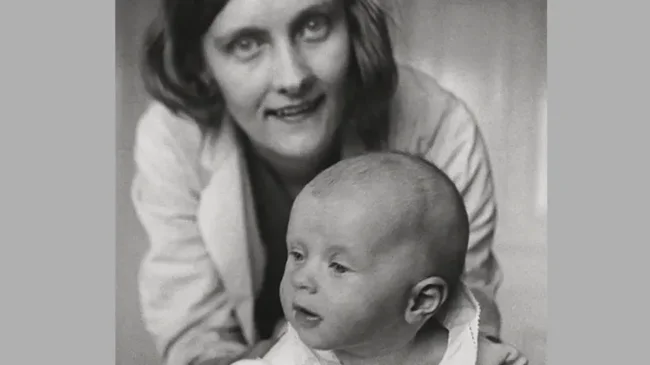
Astrid with her son
The young girl had very little choice. Either run away from home and give birth somewhere, or stay and finally disgrace the family. The first option turned out to be more acceptable and Astrid went to Stockholm to avoid gossip and backbiting while walking with a stroller down the street. Reinhold from the very beginning of their affair constantly tried to put pressure on Astrid, which, of course, she did not like.
Having moved to Stockholm, Lindgren, without consulting her lover, began studying typing and shorthand. And their relationship was still kept secret, because Blomberg's wife was collecting evidence of his infidelity for the divorce proceedings.
Astrid had to give birth in Copenhagen. Only there, in the Royal Hospital, the only one in all of Scandinavia where it was possible to keep the name of the child's mother and father a secret and not hand it over to government agencies.
Astrid left the child with the adoptive mother. Neither she nor Blomberg could yet take the boy, named Lars, to Sweden. Until the end of her days, the adoptive mother was a friend of the Lindgren family. 
Astrid and Lasse
Astrid and Reinhold, who, by the way, was still enchanted by his chosen one. But a couple of years later, Astrid did not accept his marriage proposal and said that she preferred to remain a single mother of one child rather than become a stepmother to seven. Later she would write:
"I wanted a child, but not his father."
In Stockholm, Astrid continued her studies and could correspond in German and English. Her ability to take shorthand and touch type would greatly help her in the future. The parents helped their Astrid, sent her food, but they did not ask about their grandson for a long time. It was a difficult time for Lindgren, she was sad and depressed. She tried to visit her son whenever possible and was constantly in touch with Lars's adoptive mother. Over 3 years, she came by the cheapest seated train 15 times, each time barely scraping together enough money for the trip.
Everything changed when the adoptive mother became seriously ill. There was no way out - Lasse had to be taken home.
Lars never forgot his adoptive mother and visited her regularly throughout his life.
Beginning of a career
The life of a young mother was not easy. Especially when such parents - without a single bad story in their biography, respected in society... But dad and mom eventually allowed to bring their grandson to Vimmerby. It took them several years to fully accept their daughter's situation, and Lasse lived on the farm with his grandparents for a year and a half until he finally moved to Stockholm to be with his mother. 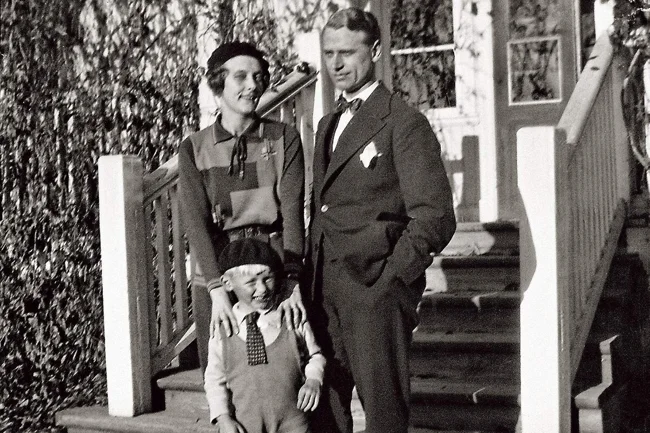
Astrid with Sture and her son
In 1929, Astrid began working at the Royal Automobile Society. There she met Sture Lindgren, who, as you might guess, would become her future husband. Sture took the information that his beloved had a son absolutely calmly.
"I love you, which means I love everything that is part of your life. Lars will be our son, take him to Stockholm."
Astrid was careful and tried not to immerse herself in her "object" head-on, as she had with her previous man. Love was born in her gradually and she accepted Sture's proposal, becoming his faithful wife until the end of his days. In marriage, the couple had a daughter, Karin.
Astrid's previous rebellious habits faded slightly within the framework of her new married status and the presence of two children, but she never stopped being a hooligan, eagerly throwing herself into games with her little ones. 
Grandma and Grandpa with Lasse
Lindgren said that she sat at home and practically did not communicate with anyone all day, except for the children. She told them fairy tales, fantasizing as she went. Money was tight and at some point, feeling needy, she wrote down two of her fairy tales and sold them to a magazine.
And then, one day, little Karin asked her mother to tell her about a girl named Pippi Longstocking (yes, the girl came up with the name herself). And Astrid began to tell: red-haired, funny, unconventional and rule-less Pippi was an exact reflection of herself. Her inner child. 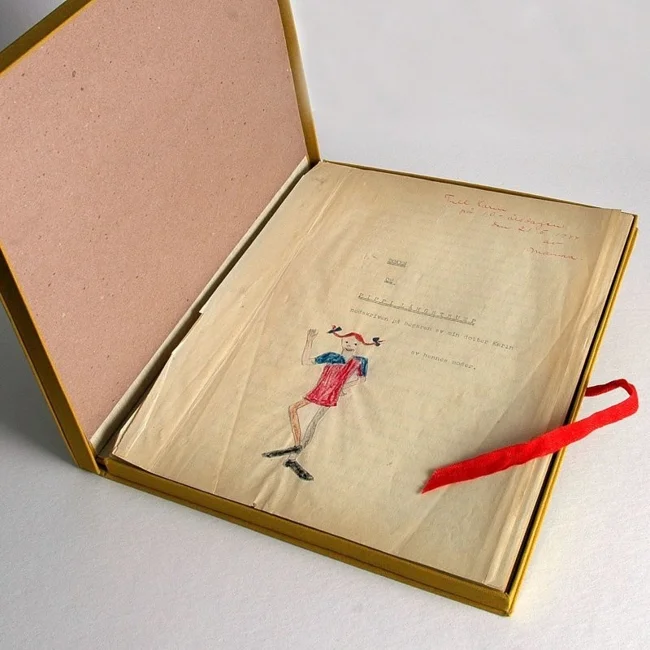
When Karin was about to turn 10, her mother rewrote all the stories about Pippi, typed them up, added pictures and bound them together. Karin accepted the gift with wild delight and together with her friends began to persuade Astrid to send the manuscript to the publisher. That's when her career began.
Loneliness 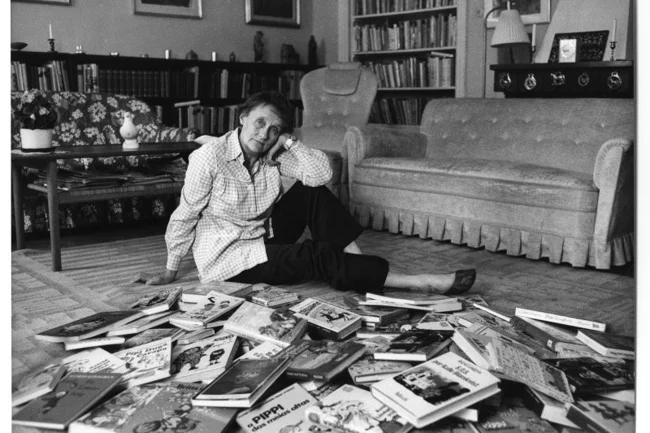
13 years of happy family life had passed when Sture announced his betrayal. And that he was leaving. He was frivolous by nature and could periodically fall in love with one or another. And he also liked to drink...
And so in 1944 Astrid was left alone. And she wrote in her diary:
"I suffered half a year of terrible suffering in the second half of 1944, the very foundations of my existence were shaken. I am desperate, disappointed, depressed, often sad - but I would not say that I am unhappy. My life is full, despite everything. I have learned one thing, at least: happiness comes from within, not from others." 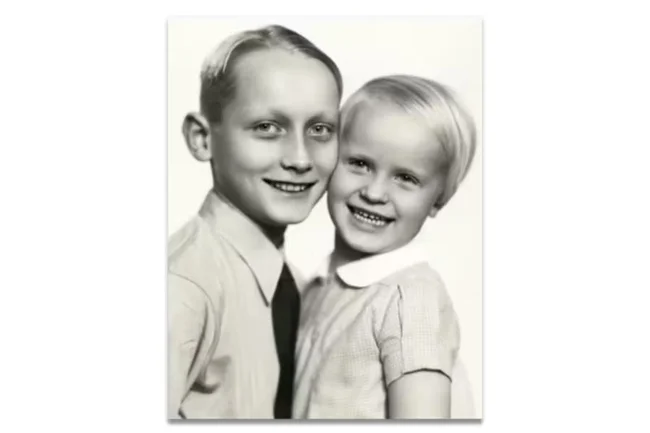
Lasse and Karin
Later, she liked to repeat the Chinese proverb: "You cannot stop the birds of sorrow from flying over your head, but you can prevent them from making a nest in your hair."
It was creativity that became Astrid's way of overcoming the pain of betrayal that she had to face. And Sture, by the way, returned soon enough, begging his wife to forgive him, the fool. She forgave him. And she plunged into writing with all her might.
In 1952, Sture Lindgren died. His high position as director of a car company required constant receptions and parties. His liver gave out and Sture died of cirrhosis. Astrid held his hand in the hospital while her husband was dying.
"He was like a child to me, I loved him very much. I always held his hand, but I can't follow him where he goes, I can't hold his hand there. Lord, help him find his way! I would so like to hold his hand forever!"
The children grew up. The husband passed away. Astrid was left alone in the apartment, increasingly trying to fence herself off from interviews, performances and meetings with readers. It was during this period that she wrote the books "Mio, my Mio", "The Kid and Karlsson", about the detective Kalle Blomkvist and the tramp Rasmus.
By the way, Karlsson's phrase "it's nothing, it's part of life" is not Astrid's invention, but a favorite saying of the King of Sweden Charles XII. 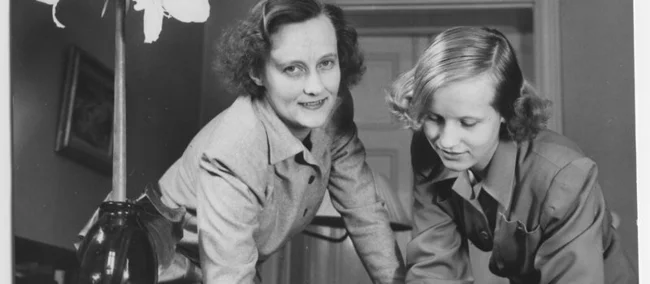
Astrid with her daughter Karin
It is noteworthy that in almost all of Lindgren's books, the strong character is a girl. She wrote to her friend:
"There is no man in the world who could tempt me with a new marriage. The opportunity to be alone is simply incredible happiness: to take care of yourself, to have your own opinion, to act independently, to decide for yourself, to arrange your own life, to sleep, to think, o-o-o-o!"
Here it is, the second way to be happy. Her difficult life led Astrid to the fact that being happy alone is possible and necessary. But you need to learn loneliness and take resources from there.
"Finally I am all alone in Furusund and can write. I have been yearning for solitude to the point of tears. There is no one around me, except for the ringing telephone, which I cannot turn off. On Saturdays and Sundays the children come. I am happy to see them, but when they leave - like now - I walk around the house and talk to myself, so happy about it."
1957. Astrid Lindgren becomes the first writer (children's) to receive an award for achievements in children's literature. The writer's archive contains 660 shorthand notebooks. These are drafts of books for fifty years. Astrid writes her stories in the mornings, and in the afternoon she goes to work in the children's literature department as an editor. Many letters came to the writer's address. Many - that means bags. She answered each one until she lost her sight, and then an assistant helped her. Astrid did not like to save money, but preferred to help someone in need.
The "grandmother of Sweden" led a rather modest lifestyle and lived in the same apartment where she started living with Sture and the children. In total, Lindgren donated over 10 million current Swedish kronor to individuals and foundations. 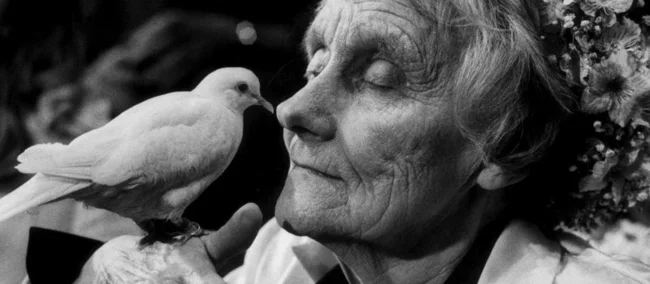
At the age of 90, the writer asked her fans not to send her gifts for her anniversary, but to send funds to build a children's medical center in Stockholm. And she set an example by donating a large sum of money to the medical center. This center is currently the largest in Northern Europe and is called the Astrid Lindgren Center
In 1988, the "Lindgren Law" was passed in Sweden. It was about animal protection. 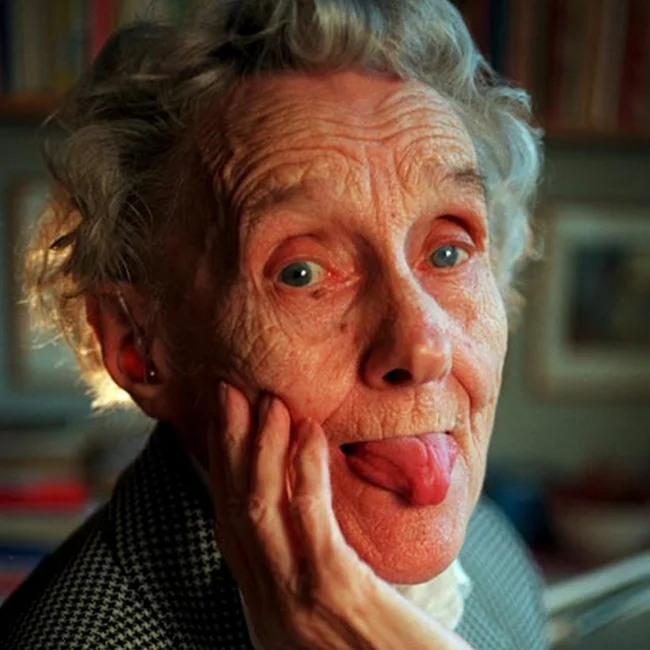
In the last years of her life, Astrid completely stopped communicating with journalists and almost never left the house. Astrid had almost completely lost her hearing and sight, but the old woman did not lose her sense of humor: when she learned that a small planet was named after her, she joked that she was now "Asteroid Lindgren".
That's how, jokingly and lightly, half-blind and deaf Astrid Lindgren passed away at the age of 94.
"Life is a strange thing, it lasts so long and yet is so short!"








